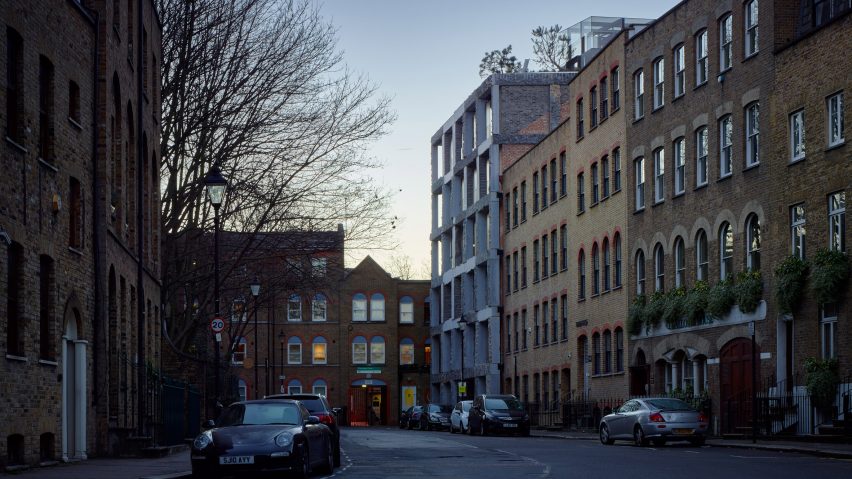Architect Amin Taha has won his appeal against Islington Council, which had ordered the demolition of the RIBA award-winning 15 Clerkenwell Close.
A report from the planning office released today revealed that 15 Clerkenwell Close has been given planning permission because it "accords with the generality of what had previously been approved".
Taha's practice Groupwork was forced to launch an appeal against the demolition order that was issued by Islington Council in September 2018 following a dispute over the building's facade.
The successful appeal decision concludes the ongoing battle between the Groupwork founder and the local authorities, which Taha said had been "painful".
Decision is "a relief"
Speaking to Dezeen, Taha explained that his studio is relieved with the decision, though the feeling was bittersweet.
"We are all very, very relieved the enforcement for demolition is over," he said.
"It was taking so long and so much of our time, it's come somewhat close to a pyrrhic victory."
15 Clerkenwell Close is a seven-storey building in central London that contains eight apartments, including Taha's own home, and several office spaces.
The complex debate surrounding the building dates back to 2016, and largely centres around its facade – a structural exoskeleton made from raw quarried limestone dotted with fossils.
Dispute revolved around missing documents
The facade was initially going to be built with brick. The raw limestone facade led the council to issue the building with two demolition orders – the first of which was withdrawn.
The second, which was overturned today, was the result of several "missing documents" that addressed these alterations. The council later conceded that Taha had in fact supplied them.
Taha believes the dispute was exacerbated by a leading member of the planning team "taking an instant dislike to the design" and, having never seen it pass through the committee process, "insisting it had no approval".
He claimed to Dezeen that the enforcement officer concerned has since been "charged with taking out a demolition order and redacting all approval information showing stone, height, design and finishes".
Taha went on to state that the officer did so "to justify the case after the first demolition notice [was] withdrawn, when that information came to light".
"It took all the way to the planning inquiry for the enforcement officer to admit under cross-examination he had redacted that information; had it been left in no breach would have occurred," added Taha.
Taha ordered to make some changes
While the planning inspector's report issued this morning has confirmed the stone facade does not need to be replaced with brick, it does instruct Taha to look into making the facade more uniform – perhaps by roughing up areas of smooth stone.
It also advises Taha to lower one of the building's solar chimneys, prune the surrounding trees and build out the office floors immediately, rather than waiting for them to be occupied.
On reflection, Taha said the whole process had been an experience of "unnecessary Kafkaesque nonsense", concluding that he was very grateful to everyone who showed support through letters and petitions during the process.
"The battle is over and now we clear up the mess left behind," he said.
"Let us send a big, big thank you to all those that have helped with their support which amounted to around 4,000 signatures, emails letters and representations to planning, the inspector and us."
Photography is by Timothy Soar.

